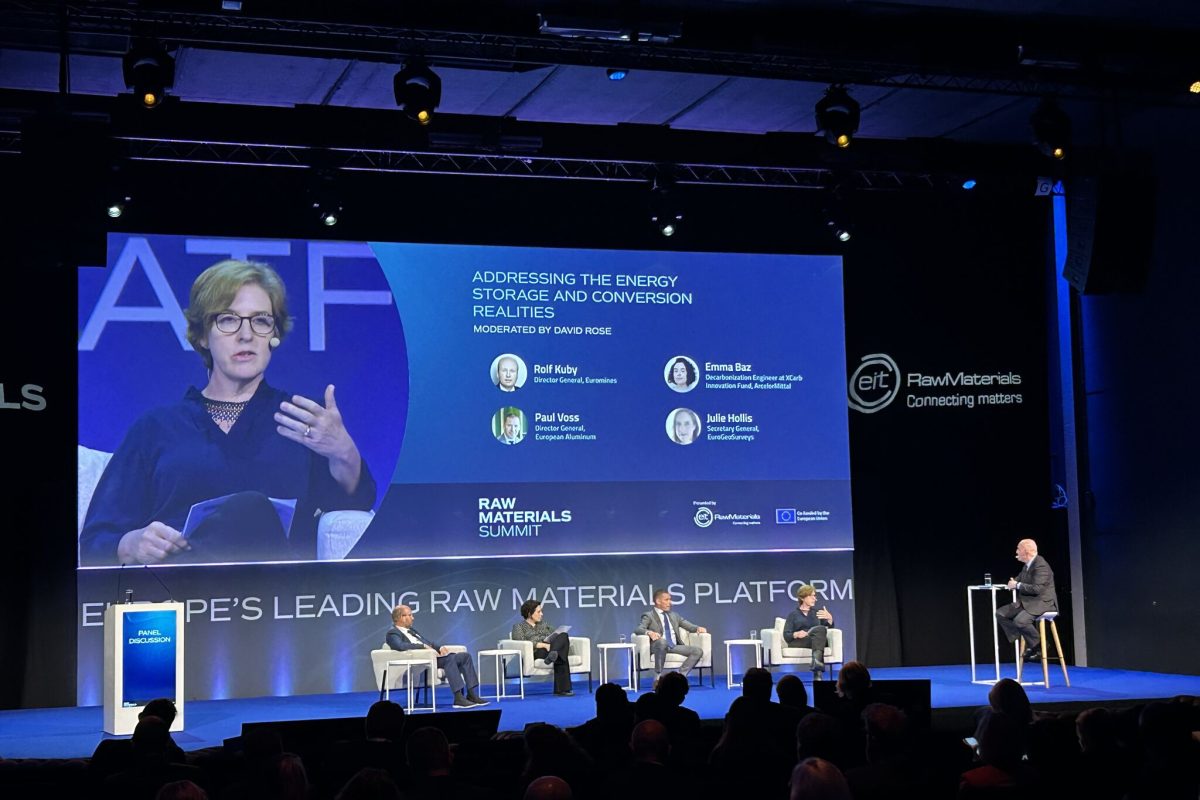
May was an eventful month for the European mineral resources sector. It started with the Critical Raw Material Act publication on 3 May. Then, for 3 days from 13 to 15 May, the EIT Raw Materials Summit brought together international representatives of the raw materials industry, policy, and academia to discuss the challenges, possible decisions, and the future of the sector in general. Our Executive Committee Member, Julie Hollis, was one of the speakers at the EIT Raw Materials Summit, so we asked her to share her experience.
Q: Hello Julie, thanks for agreeing to answer our questions! Do you think that the recent publication of the Critical Raw Material Act influenced the summit? Did this legislation feature in discussions at the EIT Raw Materials Summit?
A: Critical Raw Materials Act was at the heart of this year’s EIT Raw Materials Summit. Coming just a week before the Act entered into force, the implications of the new Act, the ways in which it is already driving new action in the European raw materials sector, and the many initiatives soon, or already, underway were really the focus for discussion.
Q: This year you participated in the EIT Raw Materials Summit as one of the panelists at the ‘Addressing the Energy Storage and Conversion Realities’ session and spoke about low-temperature geothermal energy. Why did you choose this topic and how is it relevant to the conference on raw materials?
A: The session I spoke in was about how new technologies and alternative energy sources might impact future metals demands and therefore also the future supply-demand gaps in CRMs. While geothermal is not something I often talk about, particularly at a raw materials conference, I was asked to speak on this particularly given EuroGeoSurveys’ involvement in building a pan-European atlas of geothermal potential, through our Geological Service for Europe project. When most people think of geothermal, they think of Iceland and wonder what relevance it has to continental Europe? But low-T geothermal has considerable potential to replace power consumption for space heating of buildings (and for low- to medium-temperature industry and greenhouse horticulture) with direct heat through district heating and cooling systems, and with a much lower critical minerals requirement than wind or solar. This potential impact of development of geothermal has not been taken into account in some analyses of the CRM supply-demand gap.
Q: Were there any particular sessions or presentations at the Summit that stood out to you as especially relevant to ETP SMR’s objectives?
A: There was a lot covered in the Summit, spanning the whole value chain, all of which is relevant to ETP SMR. But in terms of impact on building the exploration market in Europe, which I think is a key area of relevance to ETPSMR and to the European raw materials sector as a whole, I consider that a key session was one in which Germany, France, and Italy presented their CRM investment plans and new national raw materials funds, amounting to several billion euro in new public-private funding. This should be a real kick-start to new activity in the European raw materials exploration sector. Hopefully this is just the beginning and will also have impacts on related R&I.
Q; What do you think about this year’s edition in general? Have you heard any insights, and what were the main takeaways from the conference for you?
A: What stood out for me was that many new initiatives are already in action following the development and now implementation of the CRM Act – new national funding, new research funding under Horizon Europe, a focus on the establishment of ‘strategic projects’ under the CRM Act, which will hopefully also create new momentum in the European raw materials sector. But I was also left with the distinct impression that – like me – many see that the distance we have to travel to reach the goals of the CRM Act and, ultimately, resource security and net zero, that distance is very, very far. To achieve those goals, we have to double, triple, our efforts and our pace.
Q: Looking ahead, how do you see the role of ETP SMR evolving in the context of the new legislative landscape and the insights gained from this year’s summit?
A: The CRM Act, I think all agree, is a big step forward. It’s the first step and it provides a new focus on exactly the strategic direction highlighted in ETP SMR’s Strategic Research and Innovation Agenda, and in line with many other players in the raw materials sector. Particularly given that we will have a new Parliament, a new European Commission this year, and the proposal for a new research framework program next year (FP10), it’s crucial that ETP SMR continues to use its voice to the Commission, to national governments and authorities, to industry, and to academia to highlight the key role of R&I in building back strength in the European raw materials value chain. We need to take advantage of the momentum.
Q: Thank you, Julie, for sharing your insights and experiences with us.
A: Thanks for having me.
To sum up, The EIT Raw Materials Summit not only highlighted the current actions and strategic plans influenced by the Critical Raw Material Act but also underscored the ongoing efforts required to achieve resource security and sustainability in Europe. Julie Hollis’ insights reflect a proactive stance in leveraging new legislation and funding to drive innovation and collaboration within the sector. Moving forward, it will be essential for industry leaders, policymakers, and researchers to maintain momentum and work together to overcome obstacles. ETP SMR is committed to fostering these collaborations and supporting the sector’s strategic advancements.
